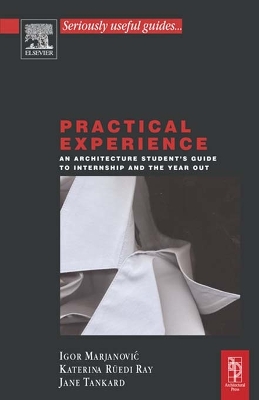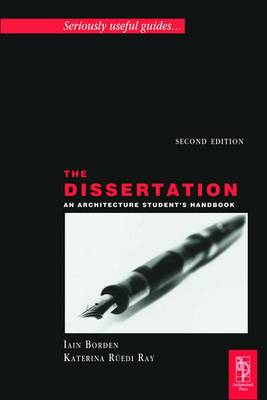Seriously Useful Guides--
2 total works
The year out, or internship, in a professional practice can be the most rewarding experience in an architectural student's education. It can also be a shock to the system to find that architectural working practices are very different to architectural study. This book provides a beginner's guide to professional practice and a step-by-step guide on how to find the placement that best suits your goals. It is the fourth title in the successful 'Seriously Useful Guides...' series.
In order to give you a real insight into professional experience, this guide includes real
life case studies from students who have been through the experience and from practices that have taken them on. It guides you through the steps of finding a placement, outlines the norms and expectations for internship in different countries, and discusses codes of office behavior and professional ethics. Contemporary architectural
practices are becoming increasingly diverse and this guide outlines some Practical experience/Internship choices, providing cases studies of award wining firms that offer practical experience. These case studies range from conventional practices based on the art of building, to practices based on digital media or contemporary urbanism. Finally, the term 'critical practice' is becoming increasingly important, and the book provides some definitions and examples of critically based architectural practices.
Also in the Seriously Useful Guides Series:
* The Crit
* The The Portfolio
* The Dissertation
This is a comprehensive guide to all that an architecture student might need to know about undertaking the dissertation, including new material on CD-ROM and online sources, web based research techniques, digital images, alternative imaging strategies, key architecture links, referencing and new dissertation extracts. It clearly navigates the student through the whole process of writing, preparing and submitting a dissertation, as well as suggesting what to do after the dissertation has been completed. Subjects covered include how to write a proposal, which research methodologies and techniques to adopt, which libraries and archives to utilize (including special architectural resources on the net), as well as how to structure, reference and illustrate the final submission.
The authors also take architecture students into new terrain, suggesting alternative methods of undertaking dissertations, whether as video, prose writing, multimedia or other forms of expression. Furthermore, this guide includes new examples of exemplary dissertations of all kinds, as completed by students in Europe and North America so that the reader can clearly see the kinds of work which they themselves might choose to pursue.
Also in the Seriously Useful Guides Series:
* The Crit
* The The Portfolio
* Practical Experience

